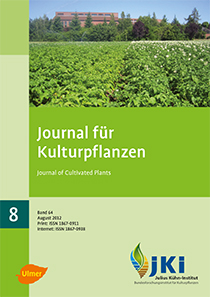Potato production in Benin – Its impact on fighting hunger and poverty in West Africa
DOI:
https://doi.org/10.5073/JfK.2012.08.03Keywords:
West Africa, Benin, potato production, Potato virus Y (PVY), Potato leave roll virus (PLRV), quarantine pests, Ralstonia solanacearumAbstract
Potatoes produce more calories per area than any other agricultural crop. The tubers are rich in substances valuable for human nutrition. Furthermore, farmers can sell potatoes on the market thus providing a stable income for their family.
Benin is one of the poorest countries in the world. One option to minimize hunger and poverty is to increase potato production.
Potatoes are grown in the regions of Alibori and Atakora in the north of Benin covering a total area of 15 to 20 ha. To increase this area to thousands of hectares a national seed potato production is required.
Potato production, traditionally the task of the farmers’ family takes place on fields with an area of approx. 0.25 ha close to small rivers because of water supply for irrigation. Seed potatoes are imported from France or potato producing neighbouring countries. The potato yield amounts to about 15 t/ha. To increase the potato yield, the irrigation system has to be improved and pests have to be controlled.
Potatoes produced in Benin were analyzed for pathogens. The performed preliminary monitoring for selected quarantine pests as indicated by EPPO showed that bacterial infection with R. solanacearum was present in one region. All tested crops were found to be free of the selected quarantine viruses and viroid. The investigated plant material was moderately infected by common potato viruses that are not listed in the quarantine lists of EPPO. Further research is needed to estimate the role of the irrigation system as potential source for bacterial infections such as R. solanacearum or the Pectobacterium spp. complex.
Downloads
Published
Issue
Section
License
The content of the journal is licensed under the Creative Commons Attribution 4.0 License. Any user is free to share and adapt (remix, transform, build upon) the content as long as the original publication is attributed (authors, title, year, journal, issue, pages).
The copyright of the published work remains with the authors. The authors grant the Journal of Cultivated Plants, the Julius Kühn-Institut and the OpenAgrar repository the non-exclusive right to distribute and exploit the work.







